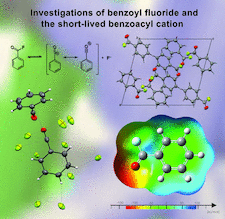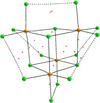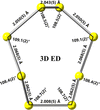issue contents
February 2025 issue

Cover illustration: Acyl cations exist as short-living species in organic reactions starting from the corresponding acyl chloride or acyl fluoride. Benzoyl fluoride and the benzoacylium cation are highly reactive and sensitive compounds. The first structure determination of the low-melting fluoride and its corresponding acylium cation uncovers their crystal structures, built up by various C⋯F contacts, as well as different kind of π-interactions. See Bockmair, Regnat, Tran & Kornath [Acta Cryst. (2025), C81, 93–101].
scientific commentaries

electron diffraction


Crystal structure of submicron-sized sulfur particles using 3D ED obtained in atmospheric conditions
crystallography in latin america


research papers


 access
access



 access
access

 access
access

 access
access
 journal menu
journal menu
























